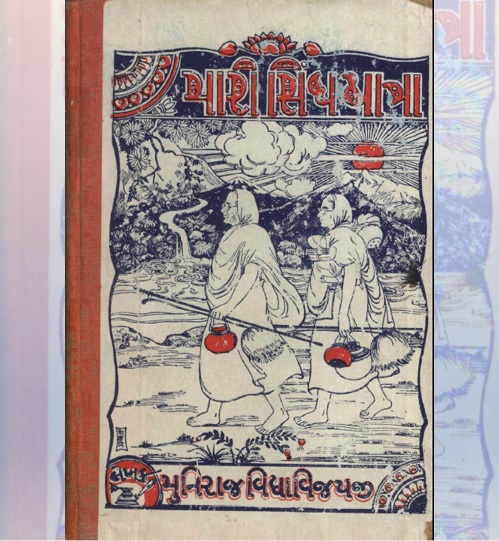
Bhimpura situated near the Sindh Madrassa on the Lawrence Road was also established by a Jain gentleman Bhimsinh Malsi
[Editor’s Note: This is Part 33 (The Stature of Jains – Part– 2) of a series of articles based on a pre-partition book named “મારી સિંધ યાત્રા” (“منهنجي سنڌ جو سفر”) in Gujarati authored by a scholarly Jain sadhu Shri Vidyavijayji, narrating his experiences of Journey and his Stay in Karachi for about 2 and a half years between 1937 and 1939. It would be advisable to click on the Introductory Article and read it to better understand the series. – Nasir Aijaz, Editor Sindh Courier]
Vimal Shah, Mumbai
Other Contributions of Jains
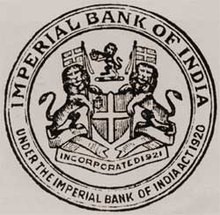 By gathering certain facts, we find that contribution of the Jain community of those times in the progress of not only the Karachi Panjrapole, but in today’s progress of Karachi as well is worth noting. Today’s Bhimpura situated near the Sindh Madrassa on the Lawrence Road was also established by a Jain gentleman Bhimsinh Malsi, who was a big merchant of wool. Likewise, magnificent buildings of Karachi – Imperial Bank, Lloyds Bank, Ralli Brothers, Chamber of Commerce, etc. were also constructed on contract by Jain gentleman Sheth Kala Gala. Thus, one-way or the other, Jains have a significant contribution, rather involvement in the development of Karachi – is known from the statements of Jains and other community people.
By gathering certain facts, we find that contribution of the Jain community of those times in the progress of not only the Karachi Panjrapole, but in today’s progress of Karachi as well is worth noting. Today’s Bhimpura situated near the Sindh Madrassa on the Lawrence Road was also established by a Jain gentleman Bhimsinh Malsi, who was a big merchant of wool. Likewise, magnificent buildings of Karachi – Imperial Bank, Lloyds Bank, Ralli Brothers, Chamber of Commerce, etc. were also constructed on contract by Jain gentleman Sheth Kala Gala. Thus, one-way or the other, Jains have a significant contribution, rather involvement in the development of Karachi – is known from the statements of Jains and other community people.

[Note by Vimal Shah: The Bank of Calcutta was set up in the beginning of the 19th century. Subsequently, the Bank of Bombay and the Bank of Madras were also established. These were called presidency banks. In 1921, all three banks merged and became the Imperial Bank of India. The building under discussion was built in 1923 in Karachi. After partition of the subcontinent, the Imperial Bank of India building was converted into the State Bank of Pakistan. The Imperial Bank of India was subsequently renamed on 30 April 1955 to the State Bank of India, which is the largest bank of India today.]

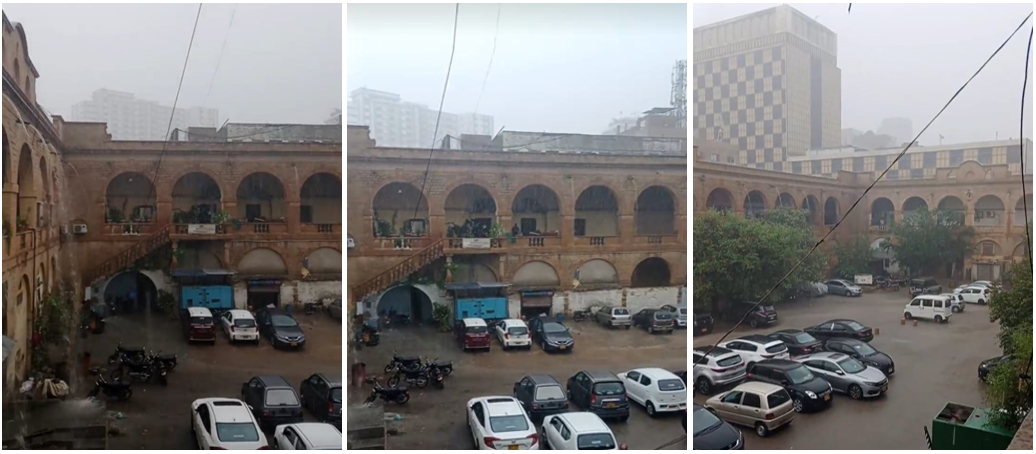
[Note by Vimal Shah: Karachi Chamber of Commerce & Industry (KCCI) was formed in 1959 through the amalgamation of four trade bodies in Karachi at that time, namely, the Pakistan Merchants’ Association, Buyers and Shippers’ Chamber, Chamber of Commerce Pakistan, and All Pakistan Chamber of Commerce & Industry.]

[Note by Vimal Shah: ‘Upashray’ is a place for religious discourses, and performing rituals]
Jain Mandir and Upashray
Out of the several people at that time, Sheth Leelachand Chaiwala, Sheth Umedmalji, Nyalchand Bhai, Aaskaran Khengar, Padmaji Velaji, Mokamchand Vallabhdas, and Navalmalji Gumanmalji etc. got together, bought a building in Soldier Bazar in the year 1855, installed a ‘Panchadhatu’ image, and thus established a Jain Mandir.
[Note by Vimal Shah: ‘Pancha’ = Five and ‘Dhatu’ = Metal. Jain idols or images are made of either stone or Bronze (a mix of five metals)]
After that image was stolen, they brought four stone images from the Jain Mandir in Hala and installed them. After that when the population grew i.e., in Samvat 1945 (Year 1888-89) bought a land in Ranchore Line and laid the foundation of Jain Mandir. Even after the construction of the Mandir was completed for some reasons images could not be installed there for seven to eight years. That time the Mandir was administered by Sheth Askaran Khengar and Gujarati trading firms. In Samvat 1958 (Year 1901-02) the images were shifted from Soldier Bazar and temporarily kept here, and on the 5th day of the Shukla Paksha of Maha month in Samvat 1962 (Year 1905-06) the four images were formally installed. Sheth Kala Gala, Bhagwandasji Navalmalji, Khetawala, and Sheth Popat Kanji had shared a major part of the expenses of the Pratistha Mahotsav (the event of installation of images). A small Upashray was also constructed adjoining the Mandir. The entire responsibility was taken by Khetawala Sheth Vastabhai Pachan.
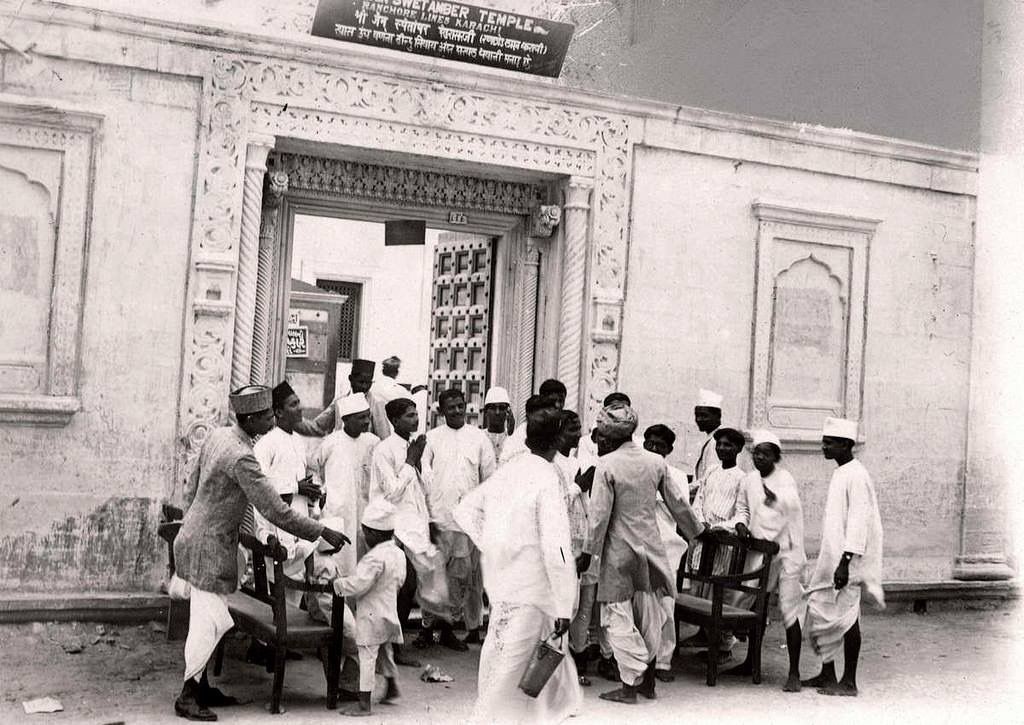
Despite having a large population of Kathiyawadis, they prefer to be identified as Halai or Zalawadi or Ghoghari by their sub-regional identities
At that time population of the Jain community in Karachi was about two hundred. The Pratistha of the Mandir is done in such an auspicious Muhurt that since then the population of Jain community kept on growing day by day, they started becoming more prosperous, and the unity among the community also grew stronger.
Since the beginning of the Mandir, the administration of the congregation was under the leadership of Sheth Vastabhai Pachan. Sheth Kala Gala and Marwadi gentlemen were also along with him in managing the administration.
The Sthanakvasi Sangh also has a separate Upashray.
[Note by Vimal Shah: ‘Mandir Margi’ or ‘Murtipujak’ is the idol-worshiping and ‘Sthanakvasi’ is non-idol-worshiping sect of Jainism.]
Regional Pride
If we look at the present Jain population of Karachi, then there are more of Kathiyawadis. The number of Kutchis, Marwadis and Gujaratis are less as compared to them. Kathiyawadis are more prosperous too, so less populated Kutchis, Marwadis and Gujaratis live in harmony with Kathiyawadis. Despite having a large population of Kathiyawadis, they prefer to be identified as Halai or Zalawadi or Ghoghari by their sub-regional identities. The Halai and Zalawadi communities had built a common Dharmashala, but later they have separated them with a wall.
[Note by Vimal Shah: Present day Gujarat State of India comprises of erstwhile princely states like Kutch, Gujarat and Kathiyawad (with sub-regions like Zalawad, Halar and Ghogha). Present day Rajasthan State of India comprises of erstwhile princely states like Marwad. The communities are identified based on their native regions.]
Gujarati Jains
Population of Gujaratis among Jain community is quite less. Sheth Choonilal Bhoola Bhai is prominent among them. He is religious, kind-hearted, and generous. He is Mandir Margi, plays a leading role in all the activities of the congregation, and is a member of the managing committee as well. He was the source of prime inspiration behind bringing our group of Sadhus to Sindh. And he was also a part of the Karachi deputation that visited Udaipur. Apart from him Bhai Ratilal Chashmawala is there, his father Dahya Bhai Multani was a very popular and a leading businessman. There are a very few Gujaratis apart from these. There’s also business firm of Sanghvi Nagindas Karmachand of Patan. (Continues)
Click here for Part-I, Part-II, Part-III, Part-IV, Part-V , Part-VI , Part-VII , Part-VIII , Part-IX, Part-X, Part-XI, Part-XII, Part-XIII , Part-XIV, Part-XV, Part-XVI , Part-XVII, Part-XVIII , Part-XIX, Part-XX, Part-XXI, Part-XXII , Part-XXIII , Part-XXIV, Part-XXV , Part-XXVI, Part-XXVII, Part-XXVIII, Part-XXIX , Part-XXX, Part-XXXI, Part-XXXII
______________
About the contributor of the series of Articles based on the book
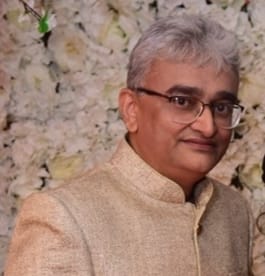 Vimal Shah is a follower of Jainism by birth and is based in Mumbai, India. He is a Computer Engineer and holds a Diploma in Jainology from Mumbai University. He has an immense interest in reading, writing, studying, and teaching Jain Philosophical subjects. He conducts classroom as well as online sessions on Jain Philosophical courses. He continues to study various subjects and remains a student of Jain Philosophy. He has significantly contributed to the Translation Project of the ‘Compendium of Jainism’ from English to Gujarati – an initiative of the JAINA India Foundation. He is also associated with a Project for the translation of Jain Aagams (Scriptures) from Gujarati to English. He has a special interest in the history and preservation of the Jain Heritage in Pakistan. He was part of a Delegation of the Jain Heritage Foundation, New Delhi that visited various Jain Heritage Sites in Pakistan in May-2023.
Vimal Shah is a follower of Jainism by birth and is based in Mumbai, India. He is a Computer Engineer and holds a Diploma in Jainology from Mumbai University. He has an immense interest in reading, writing, studying, and teaching Jain Philosophical subjects. He conducts classroom as well as online sessions on Jain Philosophical courses. He continues to study various subjects and remains a student of Jain Philosophy. He has significantly contributed to the Translation Project of the ‘Compendium of Jainism’ from English to Gujarati – an initiative of the JAINA India Foundation. He is also associated with a Project for the translation of Jain Aagams (Scriptures) from Gujarati to English. He has a special interest in the history and preservation of the Jain Heritage in Pakistan. He was part of a Delegation of the Jain Heritage Foundation, New Delhi that visited various Jain Heritage Sites in Pakistan in May-2023.